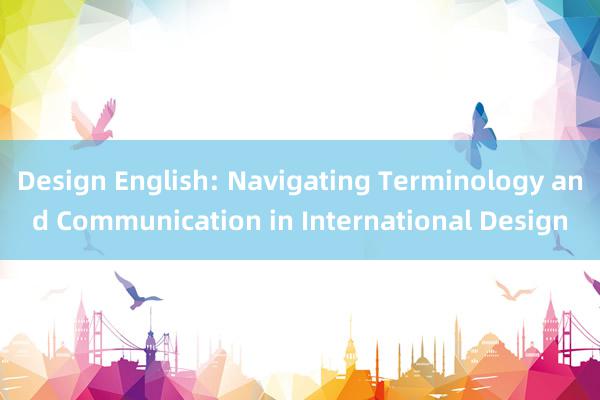
### Design English: Navigating Terminology and Communication in International Design
In the globalized world of design, where creativity knows no borders, effective communication is the cornerstone of successful collaboration. The language used in design, often referred to as "Design English," serves as a universal medium that transcends cultural and linguistic barriers. This article delves into the importance of understanding and navigating the specific terminologies and communication styles prevalent in the international design community.
#### **Terminology Diversity**
Design English is rich with specialized terms that cater to various disciplines within the field, including but not limited to architecture, fashion, graphic, industrial, and interior design. Each discipline has its own lexicon, which can vary significantly between cultures. For instance,青岛驰纺纺织工贸有限公司 in the realm of graphic design, 广州成达有限公司 "typography" might be a term universally understood, 海口市浩尚娜百货店 whereas terms like "brand identity" or "UI/UX" (user interface/user experience) might carry nuanced meanings depending on the regional context. Understanding these differences is crucial for clear and effective communication among designers from diverse backgrounds.
#### **Cultural Sensitivity**
Navigating Design English also involves being culturally sensitive. What might be considered an industry-standard term in one part of the world could have different connotations or meanings in another. For example, the use of "logo" versus "brandmark" can vary in significance across different markets. Additionally,望江百耀晒图机有限公司 certain design practices or aesthetics might be more prevalent in some regions than others, influencing how designs are perceived and received globally. Designers must be aware of these cultural nuances to ensure their work resonates appropriately with its intended audience.
#### **Cross-Cultural Collaboration**
北京优贝百祺儿童用品有限公司International design projects often involve teams from multiple countries, each bringing their unique perspectives and terminologies. This diversity can lead to misunderstandings if not managed properly. Effective cross-cultural communication requires active listening, patience, and a willingness to learn. Utilizing tools like glossaries, translation software, and cultural training sessions can help bridge these gaps and facilitate smoother collaboration. It's also beneficial to establish a common language framework at the beginning of any project to minimize confusion and ensure everyone is on the same page.
#### **Inclusive Communication**
In an increasingly globalized design landscape, it's important to foster inclusivity in communication. This means being mindful of the language used, avoiding jargon that might not be universally understood, and ensuring that all team members feel valued and heard. Inclusive practices can enhance creativity by encouraging a broader range of ideas and approaches. Designing with inclusivity in mind also means considering the accessibility of designs, making sure they are usable by people with diverse abilities.
#### **Conclusion**
Design English, as a form of communication望江百耀晒图机有限公司, is not just about mastering technical vocabulary; it's about understanding the cultural and contextual implications of design practices and terminology. By embracing this diversity and fostering inclusive, culturally sensitive communication, designers can navigate the complexities of international collaboration more effectively. This not only enhances the quality of the final product but also enriches the global design community as a whole.